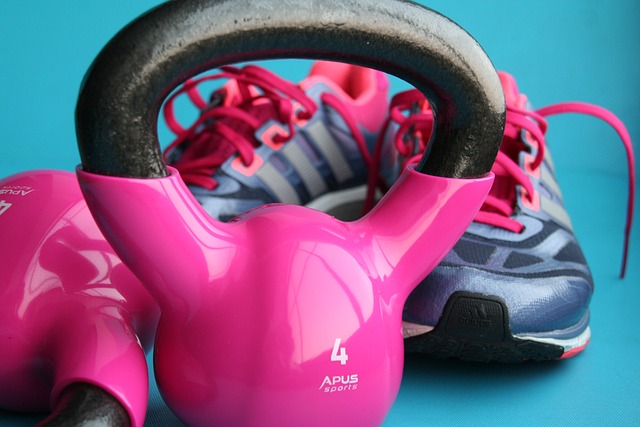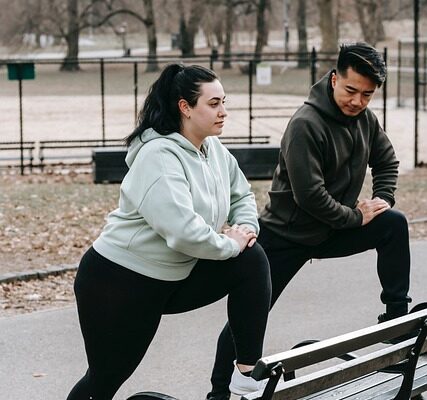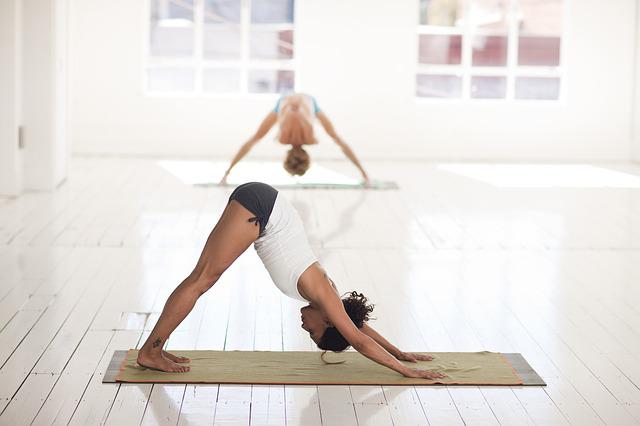Treatment for weak hip flexor includes exercises and physical therapy. Athletes compete in their sport by relying on strong hip muscles. Recreational athletes rely on these muscles to power them through a strenuous run.
And we all need our hip flexors to fire in order to walk, stand, climb stairs, run, squat, sit up in bed, and do a variety of other daily actions.
These muscles work together to allow you to flex or lift your thigh towards your body. When you bend your torso forward at the hip, you also stimulate the hip flexors.
However, if these muscles are weak or tight, you may have low back pain or tightness at the front of your hip. That is the reason why it is critical to have strong and flexible hip flexors.
Here are seven of the greatest hip flexor exercises for at-home or gym use.
- Straight leg raises
- Mountain climbers on the floor
- Pose of a pigeon
- Lunge jump
- Split squat in Bulgaria
- Kettlebell Swing
- Hip march with bands
Straight Leg Raises
Straight leg raises are one of the most basic and simple hip flexor exercises. This exercise works both the hip flexors and the core muscles.
It’s frequently included in a rehab program following a hip or pelvic injury, and it’s also a great exercise to incorporate into a lower-body routine. To complete the straight leg lift, you’ll need an exercise mat.
How to Perform a Straight Leg Raise
- Lie on your back, arms by your sides, with your legs straight.
- Bend your right knee to 90 degrees. Set your right foot down on the floor.
- Engage your quadriceps muscles in your left leg, inhale, and lift the leg to a 45-degree angle while keeping the leg straight.
- Hold the position for 3 to 5 seconds.
- Exhale and gradually lower the left leg back to the starting position.
Rep 10 times before changing legs.
Modifications: Shorten the distance you elevate the straight leg. Begin by elevating your leg a few inches off the ground and gradually raise the height each time you complete the exercise.
Mountain Climbers on the Floor
Mountain climbers are already a difficult activity. When you combine the technique with a set of slide discs, you will feel the burn for days. This exercise primarily targets your core and hip flexor muscles. They also increase agility while burning calories.
How to Perform Mountain Climbers on the Floor
- On the floor, place a pair of slide discs or furniture sliders.
- Put your feet on the discs and perform a plank or push-up.
- Your hands should be shoulder-width apart, your arms straight and beneath your shoulders, your back flat, and keep your body straight from your shoulders to your ankles.
- Bringing your right knee up to your sternum while keeping your body straight.
- Go as near to your chest as possible while keeping your posture straight.
- Return to the original position.
For 30 seconds, switch legs and alternate right and left legs.
Modifications: To make mountain climbers easier, remove the sliding discs and execute a regular exercise instead. You can also shorten the distance your leg travels toward your chest.
Pose of a Pigeon
Pigeon Pose (also known as Eka Pada Rajakapotasana) is a hip-opening yoga pose with a forward bend. The extended leg engages the hip flexors and targets the psoas muscle directly.
How to Perform the Pigeon Pose
- Begin in the Downward-Facing Dog pose or on all fours in a tabletop position.
- Bring your right knee forward and align it with your right wrist from this posture.
- Your right ankle should be facing your left wrist.
- Return your left leg.
- It should be straight, with toes pointed and heels pointing upward.
- You should be sitting up straight with a slight bend in your waist.
- Bring your hips down to the earth.
- Step forward with your hands until your forearms are on the floor and your head is resting on your arms.
- If this is too tough, keep your torso erect and lean forward only as far as possible.
- Hold this position for five deep breaths.
- Push back with your hands, elevate your hips, and return to all fours.
Rep to the position with your left leg.
Modifications: If step four is too difficult, substitute an elevated pigeon position. Maintain an erect posture and only lean forward as much as you can. To reduce the distance between your body and the floor, try placing a yoga block under your hip or resting your head on a yoga block.
Lunge Jump
The jump lunge combines plyometric action with quad, hip flexor, hamstring, and glute muscular training. Plyometric exercises, such as the jump lunge, improve lower-body power and performance.
How to Perform a Jump Lunge
- Place your feet shoulder-width apart.
- Put yourself in a lunge position.
- Reduce your body weight so that your forward leg is parallel to the floor. Position your arms at your sides.
- Jump up with both feet, swapping foot positions mid-air.
- Your left leg will now be in front of you, while your right leg will be behind you.
- Land in a lunge with your other leg forward.
- While jumping, you can pump your arms in the air.
Repeat the lunge jump movement 10 times on each side for 30 seconds.
Modifications: The leap lunge is a more advanced maneuver. If the polymeric jump is too tough, execute a stationary forward or reverse lunge or a pair of walking lunges instead.
Split Squat in Bulgaria
Bulgarian split squats are a middle-level exercise that works the hip flexors, glutes, and calves. A knee-height bench or box is required. The move is made unilaterally, which means you only work on one leg at a time. This can aid in the correction of side-to-side muscular imbalances.
Bulgarian Split Squat Technique
- Place a bench or a box behind you.
- Check that it is knee height and level.
- Stand two feet in front of the bench, with your feet hip-width apart. Maintain a straight line of sight with your chest and eyes.
- Keep your shoulders from rounding.
- Pick up your left foot and place it on the bench behind you, with the ball of your foot in touch with the bench, starting with the right foot forward.
- Maintain a straight back and lower your left knee to the floor, but do not allow it to touch the floor.
- It will hover over the ground before returning to its original place.
- Keep your right knee should be bent at a 90-degree angle, and your thigh should be parallel to the floor.
- Return to standing by pressing the right foot into the ground and pushing the top of the left foot into the toe box.
Perform 12 to 15 reps on each leg.
You can increase the difficulty of this exercise by holding a dumbbell in each hand, a weight plate, or a small kettlebell in both hands.
Modification: Begin with bodyweight only to ease into this workout. Consider starting with a modest weight and gradually increasing as your legs and core strengthening. Relocate the move to the floor if having your leg on the bench bothers you. As you do the exercise, keep your back foot on the floor.
Kettlebell Swing
The kettlebell swing is a combination of cardio and explosive strength, and it works every muscle in your body. This technique is generally performed with your hip flexors activated.

How to Perform a Kettlebell Swing
- Put a kettlebell in front of your pelvis.
- Stand tall with your feet somewhat wider than your hips, and your legs slightly turned out.
- Your back should be straight, and bend your knees and thrust your hips to lift up the kettlebell with both hands.
- Raise the chest and pull the shoulders back.
- Swing the kettlebell between your legs (as if passing a football), then stand tall, swinging the kettlebell up in front of your chest as you tighten your buttocks and thrust your hip forward.
- Swing the kettlebell up to shoulder level. Maintain your body weight on your heels.
- Repeat by lowering the kettlebell and swinging through your legs.
Swing the kettlebells for 60 seconds or 15 to 20 repetitions.
Modifications: Other than taking your time learning how to do the kettlebell swing, there isn’t much you can do to change it. Consider employing a personal trainer or physical therapist to guide you through each phase and monitor your performance. They can ensure that each stage is carried out correctly.
Hip March with Resistance Bands
The banded hip march (also known as the psoas march) is a great activity for strengthening the hip flexors. Furthermore, the inclusion of a band around the ankles means you’ll be fighting against resistance, making the workout more difficult.
How to Perform a Banded Hip March
- Stand with your arms at your sides. And feet hip-distance apart.
- Maintain a high chest and a tight core.
- Wrap a tiny resistance band around both of your feet’s balls.
- Contract your core muscles and extend your right knee out in front of you as if marching.
- When it reaches your hips, come to a halt.
- Raise your left arm as your right knee approaches your hips.
- The complete circle will be repeated from the opposing arm to the opposite leg.
- Lower the right leg slowly, then repeat on the left.
Perform 8 to 10 repetitions on each leg, switching sides.
Modifications: You can skip the band and just do a psoas march instead. Consider this a low-impact, high-knees exercise. You can also cut the march in half by raising your knee halfway.
To Conclude on Hip Flexor Exercises
Hip flexor weakness is widespread, and it is generally caused by sitting too much and exercising too little. Strengthening them now may result in improved mobility as you mature.
Incorporate flexor exercises and targeted strengthening workouts into your program. Speak with a physical therapist or a licensed personal trainer if you need assistance getting started.



